One is finally built!
Hi Jimk04,
Nice job widening the rebate, the baffle looks fantastic!
Enjoy!

So, 180° advance at the cut-off if we take the original signal (low pass) ?! Hummm, not easy for me yet to got it. I re read from the beginning the filter theory tonight ! Homeworks needed for me !
Thanks, I read the pdf already and find it no so clear or more exactly only made for people that are easy with the concepts of filter, group delay and phase...which clearly I am not yet... At least understood the half delay period (0.5) vs a the 0.22 of a JMLC for instance with different slope and filter cut-off (But18/But18 iirc)
Thanks, I read the pdf already and find it no so clear or more exactly only made for people that are easy with the concepts of filter, group delay and phase...which clearly I am not yet... At least understood the half delay period (0.5) vs a the 0.22 of a JMLC for instance with different slope and filter cut-off (But18/But18 iirc)
Thanks to Jim I have purchased today round angle to glue on the front layers.... that permits me as well to advance the front baffle for more delay in the lows... cool 🙂
So, 180° advance at the cut-off if we take the original signal (low pass) ?! Hummm, not easy for me yet to got it. I re read from the beginning the filter theory tonight ! Homeworks needed for me !
Thanks, I read the pdf already and find it no so clear or more exactly only made for people that are easy with the concepts of filter, group delay and phase...which clearly I am not yet... At least understood the half delay period (0.5) vs a the 0.22 of a JMLC for instance with different slope and filter cut-off (But18/But18 iirc)
Hi Diyiggy,
We should probably continue this conversation in the Harsch XO thread to reduce confusion of folks making this first order transient perfect speaker.
Hi Diyiggy,
We should probably continue this conversation in the Harsch XO thread to reduce confusion of folks making this first order transient perfect speaker.
Please feel free ignore me X here 🙂 but a request is stop call this system "Transient perfect" as i hate false marketing or misunderstandings and if you absolute want that sence then call it "Transient perfect at one point in space" or "Transient perfect at design axis" or "Transient perfect sweet spot". Reason is if you crossover say 4th order 800Hz you will not get the nice triangle but will get absolute the same transient within a moving microphone window say 1x1 meter and that is in my view more transient perfect in there is coherence within that acoustic window, in a acoustic domain using 1st order crossover one get another looking step reponse per 2 inches within that 1x1 meter moving microphone around and in my view why it sound so pleasing because of that non coherent spray, nothing large diameter piston relative to lower diameter piston can hold its pattern up to or more than a decade for a slope being only -20dB a decade away and therefor horizontals is ruined and for verticals you already know center to center distance spacecing is responsible lobe is tilted because slopes phase is always 90º apart and if transducers slope cant 100% keep up hold the slope so their tails deviate a bit then phase will fast get more than 100º apart each other and the tilted lobe gets worse and worse or weird looking, these deviations that fast will happen in acoustic domain verse the perfect sum of 1st order slopes in electric domain where there is no axis other than strait 0º is in my view and research why acoustic 1st order sound so pleasing and in first view more interesting or less borring than a pair of good headphones that by design is transient perfect, again feel free ignore me but really think we get a better audio world if stuff is named correct.
Yes, thanks X, it makes sense.
@ normanbates : you're definitly a compression driver/horn guy 🙂
@ normanbates : you're definitly a compression driver/horn guy 🙂
Good points Byrtt. And it is indeed transient perfect at one point but transient almost-perfect, or transient-superb everywhere else. 🙂
yea, I tried, I always come back to full range drivers (or 6db crossovers).
Someone said, it's like a gal you marry and divorce 3 times and still run back to.
Actually, the box builder with drivers and going to build everything else, all that fell apart :-(
I'm "running" back to 2145's in 3ft3 sealed 1 : 1.618 ratios box (like fern & roby raven but sealed).
Someone said, it's like a gal you marry and divorce 3 times and still run back to.
Actually, the box builder with drivers and going to build everything else, all that fell apart :-(
I'm "running" back to 2145's in 3ft3 sealed 1 : 1.618 ratios box (like fern & roby raven but sealed).
Last edited:
Good points Byrtt. And it is indeed transient perfect at one point but transient almost-perfect, or transient-superb everywhere else. 🙂
Welcome, aah forgot documentation or reality dosn't work here anymore so almost like talking to a door thanks, but admit in hindsight also forgot system is born categorysized reference monitor so of course its "almost perfect" or "Superp" no matter what analyzed data will tell 😀..
Not sure what you mean Byrtt but I have always been about measuring and posting data. You are right that it is only “perfect” at one point, but I would say that being not at that point is still very forgiving and the sound of percussive instruments will still be clearer and more crisp than a LR2 or LR4 since their step response is a total mess of ups and downs.
Maybe it is not up to your Spinorama standards - but personally, I find that too complex to wrap my head around. It’s just too much data and I am not sure it will tell me more than what I need to know when voicing a crossover.
Frequency and Phase:
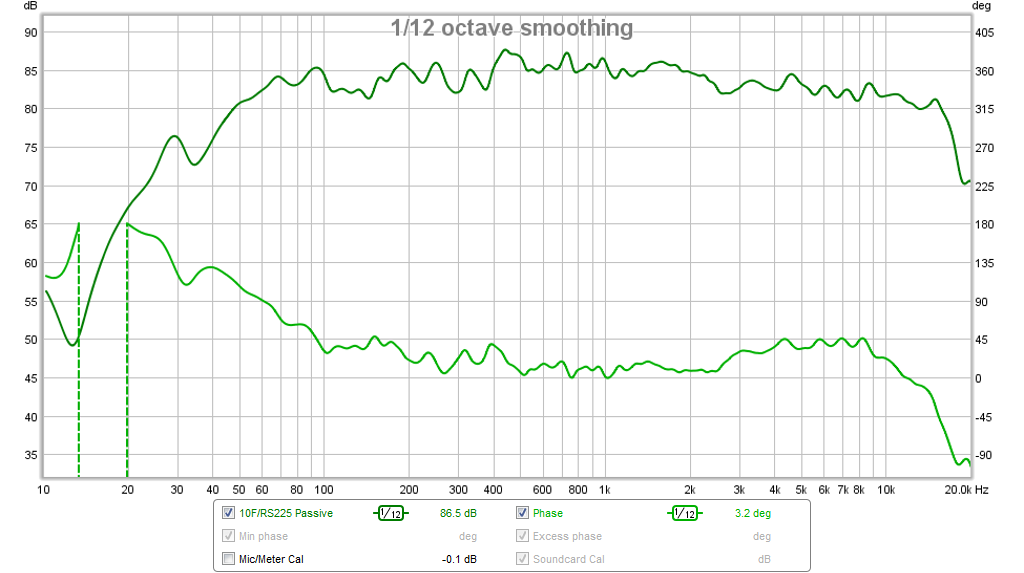
Step Response:
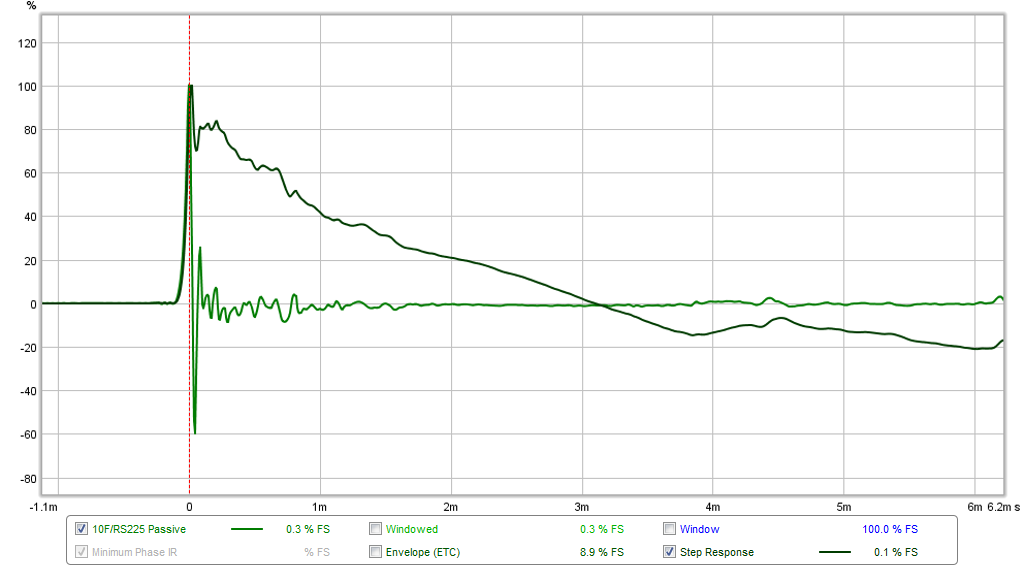
Crossover Curve:
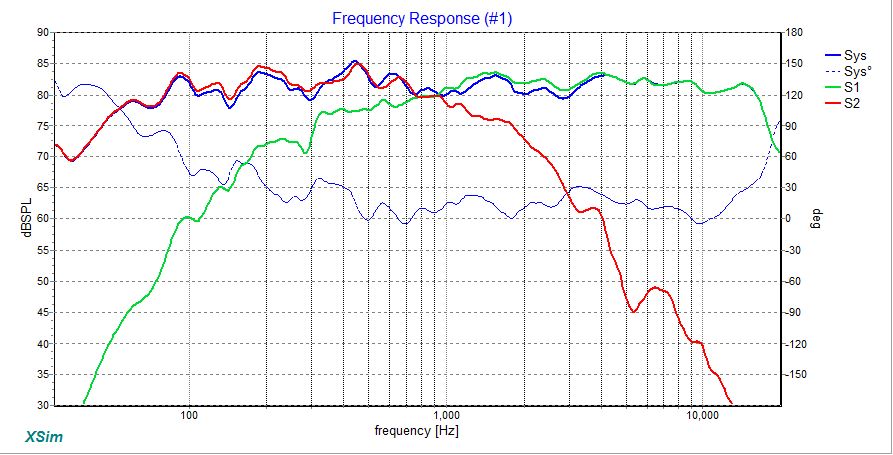
Call me old fashioned but I can’t understand what this is telling me, and why it’s important:
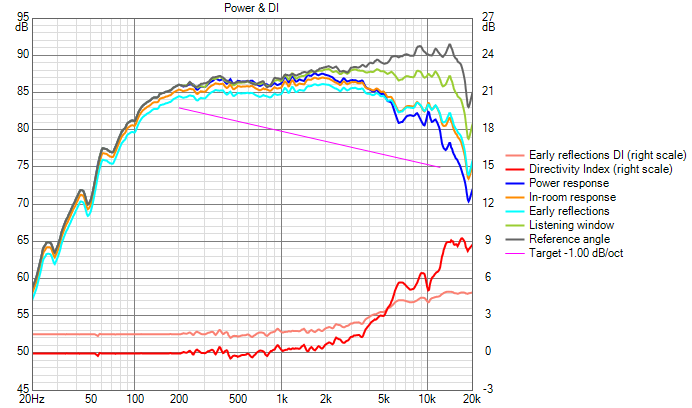
You can ask the many people who have built this speaker. I don’t hear anyone saying that the DI is bad, or the Early Reflections DI, or the Power Response, or the In-Room Response is bad. Or it has big vertical polar lobing problems when they dip their head below the 10F axis, etc.
And really maybe the only way to fix this is to have a single driver full range or a synergy, or a coaxial with DSP.
I think this speaker is simple to build and does a lot of things enjoyably. If the term transient perfect bothers you, we can call it “transient-super”. 😉
Maybe it is not up to your Spinorama standards - but personally, I find that too complex to wrap my head around. It’s just too much data and I am not sure it will tell me more than what I need to know when voicing a crossover.
Frequency and Phase:

Step Response:

Crossover Curve:
Call me old fashioned but I can’t understand what this is telling me, and why it’s important:
You can ask the many people who have built this speaker. I don’t hear anyone saying that the DI is bad, or the Early Reflections DI, or the Power Response, or the In-Room Response is bad. Or it has big vertical polar lobing problems when they dip their head below the 10F axis, etc.
And really maybe the only way to fix this is to have a single driver full range or a synergy, or a coaxial with DSP.
I think this speaker is simple to build and does a lot of things enjoyably. If the term transient perfect bothers you, we can call it “transient-super”. 😉
Last edited:
Not sure what you mean Byrtt but I have always been about measuring and posting data. You are right that it is only “perfect” at one point, but I would say that being not at that point is still very forgiving and the sound of percussive instruments will still be clearer and more crisp than a LR2 or LR4 since their step response is a total mess of ups and downs.
Maybe it is not up to your Spinorama standards - but personally, I find that too complex to wrap my head around. It’s just too much data and I am not sure it will tell me more than what I need to know when voicing a crossover.....
Call me old fashioned but I can’t understand what this is telling me, and why it’s important.....
You can ask the many people who have built this speaker. I don’t hear anyone saying that the DI is bad, or the Early Reflections DI, or the Power Response, or the In-Room Response is bad. Or it has big vertical polar lobing problems when they dip their head below the 10F axis, etc.
And really maybe the only way to fix this is to have a single driver full range or a synergy, or a coaxial with DSP.
I think this speaker is simple to build and does a lot of things enjoyably. If the term transient perfect bothers you, we can call it “transient-super”. 😉
Hi X, never said sound is subjective very forgiving or step response of LR2 or LR4 have better transient and also never called you old fashioned, name "Transient perfect" was what i mean is off using 1st order into acoustic domain that more or less fill up a room with full space dispersion and yes your published data looks fine at whatever that design axis is including the triangle, but try to tell you can have a spray of hundreds different steps within a listening window and fine it doesnt bother but its actual also a time domain distortion just another kind that for LR2 or LR4, if system output is subjective forgiving or loved is very fine no problem but in yourself use it as acoustic reference for whatever upstream electronics could whish you one day would try dial in same system using linear phase 4th or 8th order @400-800Hz or as low as possible and then experience same borring transient perfect system as in good headphones for example, after such trial continue use 1st order because of reasons it makes one system forgiving/pleasing/foot tapping/enjoying/simple/doable thats fine but at the same think about the name transient perfect plus if it in the lenght is useable as layerfree acoustic system reference to judge performance differences whatever upstream electronics, that said have fun whatever action is taken or not ..🙂..
XRK,
Is this Ref Monitor meant to be listened to on axis? Or would there be toe-in for the best possible results. The reason I ask is because if I look at a single TC9, shaved flat with DSP, the results look way better when I choose a listening/design axis of ~10 degree, something that I would do (and in fact do with my arrays) with a speaker like this. If the TC9 can do this, the 10F should be able to have similar performance, only the crossover between it and the woofer could hold back the results.
- Shoot -, I forgot you listen to it under an angle already as the speaker is turned upside down, with the 10F under the listening/design axis. 🙁
However if I look at that graph shown, I don't think it shows that "under axis" placement of the 10F in it. It would certainly be an advantage to (be able to) show what it can do i.m.h.o.
See this graph for what I meant about the TC9:

(looking this flat due to using FIR correction)
I do find value in looking at these graphs though, as I believe the work of Toole etc. from Harman should not be ignored by us DIY folks. To present my own arrays in a similar format:

(currently working on the arrays to include the filters resulting in this behaviour)
What a graph like this depicts is that indirect sound from reflection/diffraction in the room has a similar sound signature as the direct listening axis sound. The above graphs come close to some of the top rated spinorama speakers from the research done by Harman, see a rather complete list here: Preference Ratings & Graphs
However, we as DIY folks have an advantage that we can tailor our room to our speakers and don't have to create results that would work almost everywhere.
I'd have to agree with BYRTT up to a point that the word "perfect" in 'transient perfect' might be a bit much for a speaker if it can't truly back it up with the needed performance to really earn that name. Probably a sentence chosen in enthusiasm due to the design-axis results, but maybe not quite fitting? I have no problem with calling it a REF speaker, as it probably is your reference 🙂. I won't call my speakers transient perfect, although I probably come close after correction. 😉 I do aspire to it.
Is this Ref Monitor meant to be listened to on axis? Or would there be toe-in for the best possible results. The reason I ask is because if I look at a single TC9, shaved flat with DSP, the results look way better when I choose a listening/design axis of ~10 degree, something that I would do (and in fact do with my arrays) with a speaker like this. If the TC9 can do this, the 10F should be able to have similar performance, only the crossover between it and the woofer could hold back the results.
- Shoot -, I forgot you listen to it under an angle already as the speaker is turned upside down, with the 10F under the listening/design axis. 🙁
However if I look at that graph shown, I don't think it shows that "under axis" placement of the 10F in it. It would certainly be an advantage to (be able to) show what it can do i.m.h.o.
See this graph for what I meant about the TC9:
(looking this flat due to using FIR correction)
I do find value in looking at these graphs though, as I believe the work of Toole etc. from Harman should not be ignored by us DIY folks. To present my own arrays in a similar format:
(currently working on the arrays to include the filters resulting in this behaviour)
What a graph like this depicts is that indirect sound from reflection/diffraction in the room has a similar sound signature as the direct listening axis sound. The above graphs come close to some of the top rated spinorama speakers from the research done by Harman, see a rather complete list here: Preference Ratings & Graphs
However, we as DIY folks have an advantage that we can tailor our room to our speakers and don't have to create results that would work almost everywhere.
I'd have to agree with BYRTT up to a point that the word "perfect" in 'transient perfect' might be a bit much for a speaker if it can't truly back it up with the needed performance to really earn that name. Probably a sentence chosen in enthusiasm due to the design-axis results, but maybe not quite fitting? I have no problem with calling it a REF speaker, as it probably is your reference 🙂. I won't call my speakers transient perfect, although I probably come close after correction. 😉 I do aspire to it.
Last edited:
Hi Wesayso....
Dunno if others has a problem to open the first two links of your post ?
Didn't get it : why it's transcient perfect at one point (XO frequency?) on axis ?
Dunno if others has a problem to open the first two links of your post ?
Didn't get it : why it's transcient perfect at one point (XO frequency?) on axis ?
You can't see the pictures? They are uploaded to the forum website, they work for me on both mobile and PC.
Those graphs show nothing about transient perfection though, just their DI (power response etc.) and Toole's book should be able to shine a good light on that. As well as many discussions about it here. While my graphs look great as presented. One must realize how they were achieved. The most important conclusion on those graphs is their smoothness, meaning the indirect sound within a room would be pretty even, but with a falling response, the higher one goes in frequency. Within my room I correct the indirect spectrum with room treatment, to achieve what it is I want to have, this is DIY after all. I don't cater to a wide audience, I build this for my own pleasure.
Transient perfect behavior in a speaker is quite difficult to achieve. Done passively it requires drivers that perform excellent over a wide usable bandwidth. Use of first order crossovers is often mandatory (acoustical first order). Single full range drivers can be transient perfect if they are well behaved. Actively one can achieve it with correction and higher order filters. There's a lot written about the subject, but it's never easy.
One would have to work hard on optimizing a certain listening window to be able to have this behavior over a wider area. Even when done with processing, it is still dependent on how this is achieved. A subject too long to cover here (it being off topic) but I'm sure it has been covered before (example1 example2). Speakers that would fall in this category would be the work from the late Dunlavy. I guess there are a few others, Thiel and Vandersteen come to mind. A Synergy could be done in a way to create a transient perfect speaker.
Usually when you view a 2 way, the path lengths between the drivers vary too much as soon as you move up or down to keep this transient behavior. Off axis it would depend on the crossover topology. If you keep the drivers within a 1/4 wave (or less) center to center and use the right crossover, you could create such a speaker if one chooses the right compromises. However the term is often used loosely, I guess that is what triggered BYRTT. One can see such transient behavior in it's STEP response.
There are papers floating around on the net from John Dunlavy. He certainly was invested in achieving this behavior in his speakers. Other manufacturers often choose different crossover (non transient) as it hasn't been universally accepted that we, as the listeners can pick up on it.
It has been a goal to achieve with my own speakers, and I've been there, done that. I do think there are advantages to it, but that's just my personal opinion/believe. A snippet about in regarding my speakers can be found here. Now that's a transient triangle STEP 😀.
Those graphs show nothing about transient perfection though, just their DI (power response etc.) and Toole's book should be able to shine a good light on that. As well as many discussions about it here. While my graphs look great as presented. One must realize how they were achieved. The most important conclusion on those graphs is their smoothness, meaning the indirect sound within a room would be pretty even, but with a falling response, the higher one goes in frequency. Within my room I correct the indirect spectrum with room treatment, to achieve what it is I want to have, this is DIY after all. I don't cater to a wide audience, I build this for my own pleasure.
Transient perfect behavior in a speaker is quite difficult to achieve. Done passively it requires drivers that perform excellent over a wide usable bandwidth. Use of first order crossovers is often mandatory (acoustical first order). Single full range drivers can be transient perfect if they are well behaved. Actively one can achieve it with correction and higher order filters. There's a lot written about the subject, but it's never easy.
One would have to work hard on optimizing a certain listening window to be able to have this behavior over a wider area. Even when done with processing, it is still dependent on how this is achieved. A subject too long to cover here (it being off topic) but I'm sure it has been covered before (example1 example2). Speakers that would fall in this category would be the work from the late Dunlavy. I guess there are a few others, Thiel and Vandersteen come to mind. A Synergy could be done in a way to create a transient perfect speaker.
Usually when you view a 2 way, the path lengths between the drivers vary too much as soon as you move up or down to keep this transient behavior. Off axis it would depend on the crossover topology. If you keep the drivers within a 1/4 wave (or less) center to center and use the right crossover, you could create such a speaker if one chooses the right compromises. However the term is often used loosely, I guess that is what triggered BYRTT. One can see such transient behavior in it's STEP response.
There are papers floating around on the net from John Dunlavy. He certainly was invested in achieving this behavior in his speakers. Other manufacturers often choose different crossover (non transient) as it hasn't been universally accepted that we, as the listeners can pick up on it.
It has been a goal to achieve with my own speakers, and I've been there, done that. I do think there are advantages to it, but that's just my personal opinion/believe. A snippet about in regarding my speakers can be found here. Now that's a transient triangle STEP 😀.
Last edited:
I don't think it shows that "under axis" placement of the 10F in it.
The measurements were performed on the woofer axis and so the 10F is actually below aimed up and it’s about 10deg at 1m. Laterally though I have them toed-in. Maybe 10deg off axis (they aim out wider) than direct path to listening position.
Dunlavey SC-IV is not a coaxial design but has extra mid and woofers in a WMTMW layout I think. So it also only works at a single point technically. It’s got a first order XO as does this speaker.
The first order XO is especially tough on the tweeter of the Dunlavey as I heard that the tweeter typically fails first. Luckily it’s not an expensive one.
Dunlavy Audio Laboratories SC-IV loudspeaker | Stereophile.com
Here is step at 3m and on tweeter axis:
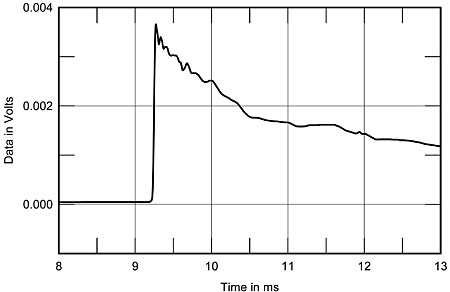
Last edited:
I'd say the Dunlavy would work well on a listening plane, not spot. It would be limited in the vertical direction though.
See the triangle that hold clear above the zero line for quite a few ms? This means good phase behavior down int the lower frequencies.
See the triangle that hold clear above the zero line for quite a few ms? This means good phase behavior down int the lower frequencies.
The Dunlavey has two 15in (?) woofers I think which is why its bass reaches down low and that gives the long tail on the step, vs mine with 8in woofer in smaller sealed box (50Hz reach). Your towers each with 25x 3.5in drivers have the cone area of a 15in woofer and hence, also reaches deep, circa 20Hz of I recall.
Thanks for entering deeper in the subject 🙂
Nah I can not see the two links, dunno why !
Yep for me transient perfect refers to the step response as seen in the Dunlavy loudspeakers tests. I don't understand why X" speaker will not be "transcient perfect" if the acoustic center of the two drivers is set on the same ZDP as he uses BUT6 ?
Nah I can not see the two links, dunno why !
Yep for me transient perfect refers to the step response as seen in the Dunlavy loudspeakers tests. I don't understand why X" speaker will not be "transcient perfect" if the acoustic center of the two drivers is set on the same ZDP as he uses BUT6 ?
Last edited:
- Home
- Loudspeakers
- Full Range
- 10F/8424 & RS225-8 FAST / WAW Ref Monitor